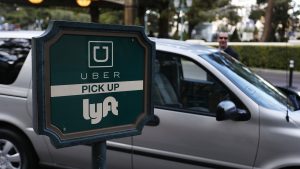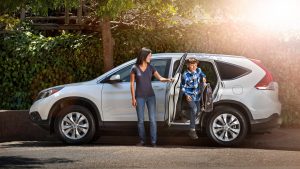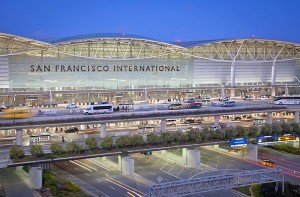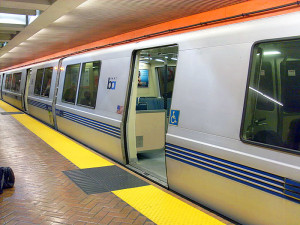 I’ve wanted to say something and bit my tongue several times, but I have to get this out there. This is an example of tech gone bad and I feel the need to say something about this because while the news writes articles about it they don’t contact someone like me or my Facebook buddy Michael Gumora [the first rideshare driver] to get our input.
I’ve wanted to say something and bit my tongue several times, but I have to get this out there. This is an example of tech gone bad and I feel the need to say something about this because while the news writes articles about it they don’t contact someone like me or my Facebook buddy Michael Gumora [the first rideshare driver] to get our input.
Ridesharing/Ride hailing/Uber/Lyft whatever you want to call it is a money pit that’s losing. It’s become something that everyone needs and wants, but it is simply not sustainable because the companies are going after markets that aren’t sustainable to begin with.
Currently, Uber and Lyft are attacking the public transportation system. The problem with that is in every city in the United States, if not the world public transport is government subsidized. It never turns a profit. Going after a market that doesn’t make money to begin with is a stupid idea and especially when you can’t figure out a way to make money at doing it.
Let me give you an example. Currently in San Francisco, the home town of Uber and Lyft there’s a major fare war between the two. To be honest in every city there’s a major fare war even if Uber, the most widely distributed rideshare company is the only business in town. They want to pull in riders and give them an awesome price so they’ll buy in and give up their cars.
In San Francisco, giving up your car isn’t too hard to do even if you live on the edges of the city because our SFMTA, as bad as everyone says it is still will pick you up and bring you where ever you need to go. If you need to leave the city it’s pretty easy to get a hook up between MUNI and BART or AC Transit or SamTrans. You can even get a Clipper Card that will work on all of these if you’ve got the money to spare.
Here’s a problem. As I mentioned previously, none of these turn a profit. Uber and Lyft are trying to pull people away from government subsidized transport systems without having a way for themselves to make money. Sure, there’s UberPOOL and Lyftline where you can stack riders together, but that still doesn’t turn a profit for either company.
Neither Lyft nor Uber has made a dime in profit since they started yet they are still getting investors to keep them afloat. Uber even admitted to losing $1,000,000/week just on UberPOOL in San Francisco in order to try and get ahead. The long shot game these companies are pushing towards is driverless cars. OK, I worked for one of the companies testing driverless cars and they’re coming along pretty good to be honest, but currently I’ve only seen a high speed hour and a half video of a car in driverless mode. Cool, it’s very cool, but what happens if there’s a problem with the car at an hour and thirty one minutes? What will be the acceptable failure rate of a driverless car? Once every week? Month? Year? Government will the the one to decide and it’s not going to go well for the companies building the cars. In California the DMV has specified that any company working with driverless cars must hit 4.5 million miles in driverless mode before they can even think of removing the driver, but again, you hit the mark, but how often will a problem pop up?
I asked once and was told that they were thinking of putting a big red button in the back that the passenger could hit if there was a problem. Here’s the problems with that:
- Have you ever watched cartoons? Big Red Button. Someone will push it…especially if it says do not push unless there is an emergency.
- People riding in a driverless car will tend to trust the car and not pay attention to what the car is doing. If you’re one of those who won’t trust it you won’t book a ride, but if you do you’re not going to pay attention to what’s going on and just sit there with your glass of champagne and laughing about what the poor people are doing. Seriously, check out this video of what people think driverless cars of the future will be like.
Perhaps I’ve moved forward a bit too fast. We don’t have driverless cars yet even though that’s the future. Let’s step back and take a look at today. Uber and Lyft just aren’t sustainable. Let me explain why. I did a little math today. I went out this morning and drove during morning rush. Two hours and pulled in about $60. For a driver, $30/hour isn’t bad, but throughout the rest of the day it doesn’t stack up like that. During those two hours I gave four rides and Uber lost $32.67 because they now tell the driver what the rider pays and gives a complete break down and they subsidize rides through surge guarantees in certain areas. Lyft does the same thing, but it’s a lot more convoluted in such a way that they can find a way to not pay you the guarantee.
Uber has a flat rate program that it offers some riders that if you google uber flat rate san francisco you might get a sign up page if Uber hasn’t sent you an email offering you the deal. For $40/month all your UberPOOL rides are $2.99 and UberX rides are $6.99 up to a ride that is normally $20. If you take a ride that say costs $25 you’d pay $5 + your $2.99 Pool/$6.99 UberX price. Drivers on the other hand are paid per mile and per minute so it doesn’t affect them and if a driver tells you it does then report them immediately. Because of this Uber loses money. Lyft is competing with them so they lower their prices and also are losing money.
As I mentioned before, neither company has turned a profit. Now here’s where it gets interesting. General Motors has invested half a billion dollars in Lyft and has a spot on their Board of Directors. GM even made an offer to buy Lyft as the news previously reported, but Lyft rejected the offer. GM also purchased Cruise Automation last year that is working on driverless cars. Now Google’s driverless car company, Waymo has partnered with Lyft to provide cars. Google and General Motors have a few extra bucks that Uber doesn’t have and I can just assume that Travis Kalanick is sweating a bit these days. News reports have said that Uber lost $2 Billion in 2015 and between $2.8-$3.8 Billion in 2016. Current reports have suggested that Uber is hemorrhaging $1 billion every three months this year with Uber only sitting on $11.8 billion in actual capital.
The future does not look bright for Uber. I am guessing that Google who likes to toss money around will eventually purchase Lyft and it will be a game over man for Uber. Uber has had too much bad press lately and pulling in riders by subsidizing rides at a loss is no way to stay in business. I personally want to get out of the game because when I started drivers were getting paid $3.50/mile and today it’s $1.15 [or $1.10 for UberPOOL]. Even though Uber is still losing money, the 45,000 drivers who come to San Francisco every day to participate in the rideshare fiasco are starting to turn away, hopefully this blogging thing I’ve been doing for years will finally start to make me some money.
If you’re a reporter working for a news agency please contact me. I’d be happy to talk to you and I can even hook you up with other drivers who’ve been involved in this for a long time.












